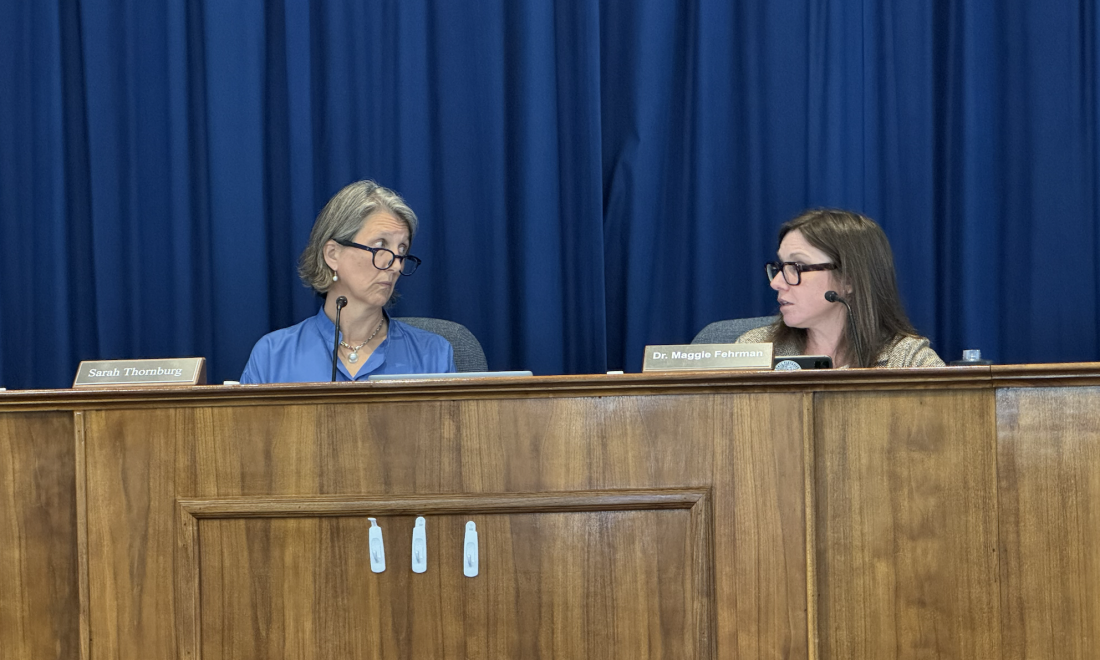The Asheville City Board of Education doesn’t want to make any cuts to its budget next year. For that to happen, the Buncombe County Board of Commissioners may have to raise taxes. The city school board hopes it will.
The school board passed, 7-0, the most aggressive budget option — one free of cuts — presented by Asheville City Schools (ACS) Superintendent Maggie Fehrman on April 21 to fund schools in fiscal year 2025-26. Fehrman will present the budget at a work session Friday, May 2, to the Board of Commissioners, which has the final say on the total allocation to local school districts.
The proposed plan spends $36.4 million. Where the revenue will come from is uncertain.
This year’s budget was $33.4 million after county commissioners clawed back more than $700,000 in January in response to Tropical Storm Helene.
To close the gap, the board is counting on county commissioners to boost allocations by $2.45 million and raise the ACS supplemental tax from 10.62 cents for $100 of property value to 12 cents per $100 of property value. That tax hike would only affect residents who live in the Asheville City district and would cost the owner of a $400,000 home an extra $55.20 a year, if approved by commissioners.
The district plans to replace $4 million it planned to take from its fund balance this year to maintain an appropriate amount of reserves, ACS Chief Financial Officer Heidi Kerns told Xpress. The district also has to make up about $440,000 less in state funding because of declining district enrollment. It also expects to pay $50,000 more to charter schools compared with last year, bringing that outlay above $3 million. Many of the district’s numbers at this point are dependent on state and county budgets yet to be passed.
Other budget stresses come from programs in which expenses outpace revenue. As ACS begins to offer free meals for students across the district, federal revenue for the program depends on how many students eat at school. Until those student numbers rise, staff projected that the school nutrition program will cost about $500,000 more than last year.
“Hopefully that will decrease as our student participation rate eating breakfast and lunch goes up. But this year, we are estimating having to invest local funds,” Fehrman said.
The district’s preschool and exceptional children programs also cost more than they bring in, requiring a subsidy from the district’s general fund.
Unfunded salary and fringe benefit increases required by the state will cost the district an additional $1.3 million next year, and increases to the district’s utility and insurance costs add up to more than $400,000, Fehrman reported. The numbers from the state could change as lawmakers finalize the budget, however.
“Any changes in the budget, depending on where they land with raises, will really impact our bottom line as well as salary changes for school psychologists, nurses and other salary increases,” Fehrman said.
If the current year’s spending plays out as expected, the budget passed by the board would drain the district’s fund balance down to $6.2 million — just at the “gold standard” of two months of operating expenditure. However, that allows for no large unexpected costs.
Board members spent little time debating the three budget options, having already made up their minds to support option one. Board member Pepi Acebo said he wanted to see even more spending included in the plan presented to commissioners, including for early childhood education.
While not included in the budget, a slide in Fehrman’s presentation showed that to offer additional early education classes, including two prekindergarten, one infant and one toddler class, the district would need $100,000 of startup funds and $528,000 to $875,000 to pay staff each year.
Board member Amy Ray, while agreeing that those needs were important, said that it was a bad strategy to request things they knew commissioners didn’t have the ability to fund. Board members agreed to revisit more aspirational budget additions after completing its strategic plan, currently in progress.
The alternative budget options, which may have to be used if the county doesn’t allocate everything the district is asking for during a tight budget year, include cuts in both central office staff and school-based positions.
The most conservative option Fehrman presented to the board — the only one that wouldn’t require a supplemental tax hike — would eliminate nine central office positions, 13.5 school-based positions, four media positions and fewer paid workdays for assistant principals, instructional assistants, bus drivers and nutrition staff.
Many of the school-based position cuts are based on a staffing formula Fehrman has been working on and are calculated based on declining enrollment across the district. There are no staff cuts proposed in the budget request approved by the school board.
Fehrman outlined what the potential loss of so many central office employees could mean.
“If we have less central office staff, our schools are going to have to pick up more of our responsiveness, and how quickly we get things done will slow down,” she said.
Ray suggested asking staff members if they would prefer a heavier workload or a reduction in pay if commissioners didn’t allocate what the district is asking for.
Once the County Commission approves its budget and education allocation, currently scheduled for Tuesday, June 3, the school board will make final decisions on any cuts or additions to its spending plan later that month.
This story was supported by the Fund for Investigative Reporting and Editing.






